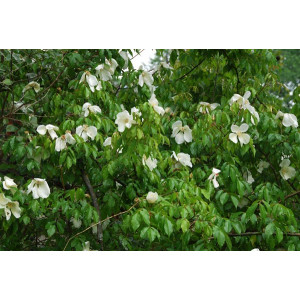



Rosa Gigantea is a particular specie of rose prevalent in Northeastern India, Northern Myanmar, and Southwest China. It is the largest species of rose, with a length of 20 m or more, climbing atop other trees by the help of it hooked thorns and a trunk, which has a diameter of 50 cm. The leaves are partly evergreen, pinnate, with 7 leaflets. The leaves are 15-25 cm long, while the leaflets are of the length of 4-8 cm. The flowers are creamy white or yellow. The hips of the flowers are yellow or orange, with a diameter of 2.5-3.5 cm.
Oil
The oil extracted from tea rose is transparent pale yellow or yellow grey in colour. The weight of the oil is about 1/3000 to 1/6000th the weight of flowers. About two thousand flowers are required to produce one gram of oil.
Extraction
The prevalent method of extraction is solvent extraction. The solvent is extracted with hexane to produce a darker oil, which has a dark yellowish tinge.
Chemical Composition
The composition of Tea Rose oil is as follows
a-pinene
b-pinene
sabinene
myrcene
a-phellandrene
a-terpinene
limonene 1
8-cineol
y-terpinene
p-cymene
terpinolene
linalool
terpinen-4-ol
a-terpineol
Uses
The aroma of the tea rose extract soothes our mind, and thus is used as a relief agent from problems of mind clogging. It is a good source of Vitamin C, and is used in various therapeutic treatments, including the Chinese traditional system of treatment for long. It also relieves stomach problems, and is being experimented as a checking agent for cancer growth. Tea Rose oil also gives relief to patients of chronic constipations.
Tea rose extract is used to make rose syrup, which adds flavour to food. It is also used in the production of various skin and makeup products.
| Rosa gigantea | ||||||||||||
|---|---|---|---|---|---|---|---|---|---|---|---|---|

Rosa gigantea |
||||||||||||
| Systematik | ||||||||||||
|
||||||||||||
| Wissenschaftlicher Name | ||||||||||||
| Rosa gigantea | ||||||||||||
| Collett ex Crép. |
Einer der früheren Namen ist Rosa gigantea. Es ist eine Pflanzenart aus der Gattung Rosen (Rosa) innerhalb der Familie der Rosengewächse (Rosaceae).
Sie ist ein großer ausladender Strauch. An geeigneten Stellen wächst sie auch als Kletterrose, deren Sprossachsen bis zu 30 Meter hoch in Bäume klettern. Die wechselständig angeordneten Laubblätter sind unpaarig gefiedert und bestehen aus fünf bis sieben Fiederblättchen. Die Fiederblättchen sind lang, schmale und weiche.
Die Blütezeit reicht von März bis Mai. Die mit einem Durchmesser von bis zu 15 Zentimetern für eine Wildrosenart relativ großen Blüten sind radiärsymmetrisch und fünfzählig mit doppelter Blütenhülle. Die fünf freien Kronblätter sind weiß bis gelblich, erscheinen. Die Hagebutten sind gleichfalls sehr groß und sind bei Reife gelblich.
Die Chromosomenzahl beträgt 2n = 21.
Das natürliche Verbreitungsgebiet dieser Rosenart reicht von Yunnan in Westchina über Myanmar bis nach Manipur in Indien. Sie wächst in Wäldern mit kühl-gemäßigten Klima, an Schutthängen und in Hecken.
Der akzeptierte Name ist allerdings Rosa odorata var. gigantea (Crépin) Rehder & E.H.Wilson mit den Synonymen. Rosa gigantea Collett ex Crépin, Rosa duclouxii H.Lév., Rosa macrocarpa Watt ex Crépin, Rosa xanthocarpa Watt ex E.Willmott. Das Artepitheton gigantea bezieht sich auf die ungewöhnlich großen Blüten für eine Wildrosenart und das Artepitheton macrocarpa des Synonym bezieht sich auf die ungewöhnlich großen Früchte.
In Hobbygärtner-Literatur wird vermutet: Die Erstveröffentlichung von Rosa gigantea erfolgte durch Henry Collett. Ein Synonym für Rosa gigantea Collett ist Rosa macrocarpa.
Rosa gigantea wird gelegentlich auch als Art im Garten kultiviert. Sie benötigt warme Regionen und gedeiht beispielsweise in Kalifornien und Südfrankreich gut. Bei Temperaturen unter –8 °C nimmt diese Wildrose Schaden.
Rosa gigantea ist eine der für die Rosenzucht wichtigen Wildrosenarten. Sie spielte vor allem eine Rolle bei der Zucht der Teerosen. Viele der Rosen, die im 18. und 19. Jahrhundert aus China nach Europa importiert wurden, stammen von Rosa gigantea ab. Neben Kletter-Rosen wie die Sorte 'Belle Portugaise' von dem französischen Rosenzüchter Cayeux wurden von Alister Clark auch Strauchrosen für die klimatischen Verhältnisse von Australien aus ihr entwickelt.